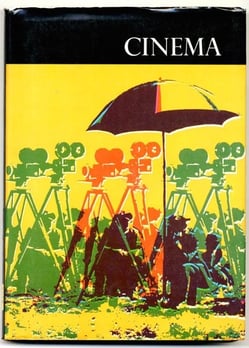When most readers hear the name Alain Robbe-Grillet, they think about experimental fiction, or the reemergence of the avant-garde in novel form in France at mid-twentieth century. Indeed, Robbe-Grillet became famous for his narrative works of fiction, including the novels The Erasers (1953), The Voyeur (1955), Jealousy (1957), and In the Labyrinth (1959). These works made Robbe-Grillet famous as one of the “New Novelists” reinventing the forms of fiction. Others included writers such as Michel Butor and Nathalie Sarraute. Yet for cinema-goers, Robbe-Grillet’s name might not even sound familiar until there’s a mention of Alain Resnais’s film Last Year at Marienbad (1961), a definitive piece of French New Wave cinema. It was Robbe-Grillet who wrote the screenplay for the film, and the experience ultimately tied the New Novel writer to the history of modern cinema for the rest of his life. What else should you know to understand movie tie-ins for Alain Robbe-Grillet?
Translating Narrative Experiments in Fiction for the Silver Screen
 Robbe-Grillet’s novels are not so different, in terms of their narrative structure (or a-narrative anti-structure, as the case may be) than his films.
Robbe-Grillet’s novels are not so different, in terms of their narrative structure (or a-narrative anti-structure, as the case may be) than his films.
According to Roch C. Smith, a scholar of the Robbe-Grillet’s work, the French writer’s early novels “radically undermine conventional expectations.” As Smith explains, “[d]espite frequent repetitions, or perhaps because of them, plots appear to have been fragmented out of existence,” and “objective representation of reality previously associated with classic realism seems to have been swallowed up into a black hole of meticulously detailed geometric descriptions.” The novels, by and large, push back against linearity and traditional notions of temporality.
Robbe-Grillet himself discussed the experimental forms he employed in fiction writing. For instance, in his critical essay “A Fresh Start for Fiction,” he discussed the need for new forms in developing narratives. In the essay he wrote: “In the future universe of the novel, gestures and objects will be ‘there’ before being ‘something’ . . . . They will still be there afterwards, hard, unalterable, eternally present, mocking their own meaning.”
The refusal to attend to traditional temporalities is also clear in Robbe-Grillet’s discussion of memory in fiction writing. In an interview* with The Paris Review in 2006, the writer said of his own writing process and the interrelation between past and present: “Human memory is not like a computer that records things; it is part of the imaginative process, on the same terms as invention. In other words, inventing a character or recalling a memory is part of the same process.”
From Fiction to Film
 How does Robbe-Grillet’s fiction tie into his film work? By most accounts, Last Year at Marienbad, the text that became his first experience in screenplay writing, employed many of the same elements for which the writer had become known in his fiction work. Scholars like Smith cite the clear “parallels between his films and his writings,” referencing elements such as “an absence of narrative linearity; the instability of time, space, and meaning; and multiple narrative perspectives.”
How does Robbe-Grillet’s fiction tie into his film work? By most accounts, Last Year at Marienbad, the text that became his first experience in screenplay writing, employed many of the same elements for which the writer had become known in his fiction work. Scholars like Smith cite the clear “parallels between his films and his writings,” referencing elements such as “an absence of narrative linearity; the instability of time, space, and meaning; and multiple narrative perspectives.”
While Robbe-Grillet ardently maintained that the two forms—fiction and filmmaking—were markedly distinct, upon reflection, we can see the close interrelation between his works in different media. The film Last Year at Marienbad is now part of the Criterion Collection, which describes the film in a manner that resists description: “this surreal fever dream, or nightmare, gorgeously fuses the past with the present in telling its ambiguous tale of a man and a woman . . . who may or may not have met a year ago, perhaps at the very same cathedral-like, mirror-filled château they now find themselves wandering.”
After writing the screenplay for Last Year at Marienbad, Robbe-Grillet went on to write screenplays for more than a dozen films and to direct 10 of those himself. If you’re interested in familiarizing yourself with his work, we recommend looking for a copy of the screenplay, published in English by Grove Press in 1962. Once you’ve read it, you must see the film for yourself.
*Read the full interview here.









